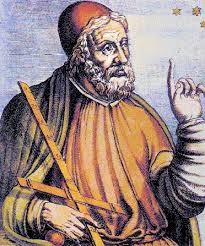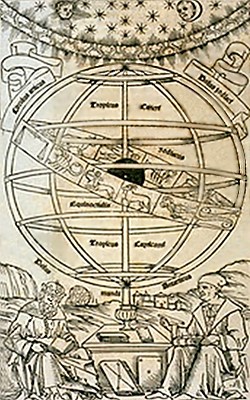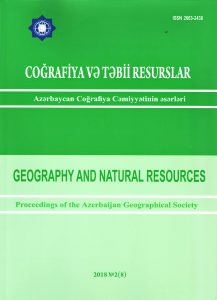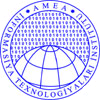NASIRADDIN TUSI AND HIS GEOMETRIC WORK “TAHRIRU UGLIDIS”Nasiraddin Tusi’s masterpiece about geometry – “Tahriru Uglidis” was written twice. The first book written in 1248 consists of 15 articles and its manuscript was published in 1880 in Tehran with the method of lithography. Both of books spread in the world in a very short time.
The second edition of the book, which had a special role in development of geometry, was very popular in Europe and especially in England at the end of XIII century. It was published in Arabic in Rome in 1594 and in London in 1657 after being translated into Latin. It is difficult to believe that, the work could become popular in Europe in Arabic during a very short time. I think that, it was translated into Latin in 1657 and learned by experts of geometry and mathematics. “Tahriru Uglidis” was written in Arabic and its version, which is kept in Rome, is in this language. Regiomontanus, who was a famous mathematician and astronomer, went to Rome in 1461 and translated seven articles of Ptolemy’s “Almagest” into Latin. He was in some libraries of Italy in 1461-1468, got copies of ancient manuscripts and returned to Vienna. Regiomontanus was known as a translator of scientific works rather than a scientist.   Claudius Ptolemy (90-168) The cover of medieval reissues of “Almagest”
Because of great interest of European scientists of that time to scientific works of the scientists of the East, these works were used as very convenient and favorable sources after being translated and even in certain cases translators acted as plagiarists and declared themselves authors. Today it isn’t a secret that, Regiomontanus, who knew Arabic, translated scientific works of eastern astronomers, however kept it secret. According to historical sources, one of favorite teachers of Isaac Newton (1642-1726), well-known English mathematician of XVII century John Vallis (1616-1703) read lectures at the University of Oxford in accordance with “Tahriru Uglidis” and played a significant role in popularization of N. Tusi in England. John Vallis, who leaded Euclid department at the University of Oxford, taught the theory of parallel lines offered by Nasiraddin Tusi there. According to Habibulla Mammadbayli, besides describing the theory of parallel lines, relations and numbers and main issues of mathematics as axiometric geometry, Nasiraddin Tusi explained some new theorems, proved them and generalized some of those theories in “Tahriru Uglidis”. He proved some theorems in different ways. The scientist included new notions in mathematics and tried to explain existing ones… Tusi proved the Pythagorean Theorem in 36 ways in the first edition of “Tahriru Uglidis” and in 12 ways in the second edition. The first book mainly consisted of theorems on the theory of parallel lines. The theory of parallel lines had a very important role in invention of non-Euclidian geometry. Nasiraddin Tusi did his best for development of this theory.1 “Beginning”, which had brought fame to Euclid, was published for many times during two thousand years as the initial course of geometry. It was taught in schools and universities before XX century. The work, which was interesting for all scientists, was copied in ancient times and spread in the world. Afterwards, “Beginning” was copied on the pergament from papyrus and on the paper from pergament.   The work was published for 2500 times – 6-7 times in a year during 400 years. The original copy of “Beginning” hasn’t remained. But it was manifolded by copiers. Eastern scientists played an important role in this process. The work was translated into Arabic by Al-Hajjaj ibn Yusuf during ages of Harun Ar-Rashid and his brother Mamun for the first and second times. The next translation was made by Sabit Ben Guerra. “Beginning” was learned by Arabs in early middle ages and then attracted attention of European scientists. The work was translated into several languages. First editions were published in 1533. It was translated into English in 1570 by the merchant of London by name Bellingway.2  One page from the book of “Beginning” of Euclid “Bases” or “Beginning” of Euclid written about geometry and arithmetic consisted of 13 articles before, but afterwards, two articles were included in it. The work was translated into Arabic for several times before XIII century. Nasiraddin Tusi trusted only two of those translations – they were made by Sabit Ben Guerra and Al-Hajjaj. But his “Tahriru Uglidis” was superior of all geometry books written before and was known as the best work on geometry in XIII-XVIII. The scientist wrote in the introduction of the work: “I decided to analyze Euclid’s work written about geometry and arithmetic after finishing my works on analyze of “Almagest”. I tried to analyze it exactly. So, I made some additional explanations. Some of those explanations were chosen from books of mentioned experts and others were my own conclusions”. (Continue of article: “The discovery of geometry in Maragha observatory”) Best regards, the member of Azerbaijan Geographic Society, President grant holder on literature, laureate of the “Golden pen” award, writer/ investigator Ramiz Daniz email: [email protected],
1 H. C. Məmmədbəyli. Mühəmməd Nəsirəddin Tusi. Bakı, “Gənclik”, 1980. səh. 78 2 Д. К. Самин. Сто великих ученых. Москва, «Вече», 2002. стр. 19
 25148 25148 |
|








 AZ
AZ EN
EN RU
RU








